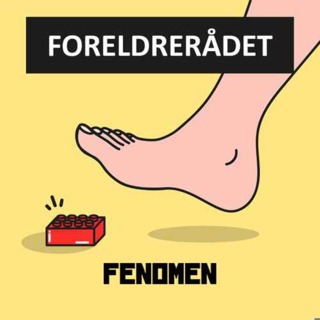
Episode 28 - FCT
Subscribe on iTunes Subscribe on Google Play Subscribe on Stitcher SPOILER WARNING! FCT is superior to many other treatments. If you want to know which treatments, you'll have to go 5 rounds with Diabolical Dr. D in the ring, suffer through Rob's snooty New England anecdotes, and share your favorite foods to eat while reading journal articles with Jackie. Only then will you have the joy of hearing a discussion about Carr and Durand and the epic Tale of FCR. And you won't even need to use an FCR response (or should that be FC response?) to witness the heartwarming return of the lag schedule. This podcast is like EZ tasks 100, folks! Articles discussed this episode: Carr, E.G. & Durand, V.M. (1985). Reducing behavior problems through functional communication training. Journal of Applied Behavior Analysis, 18, 111-126. doi: 10.1901/jaba.1985.18-111 Reeve, C.E. & Carr, E.G. (2000). Prevention of severe behavior problems in children with developmental disorders. Journal of Positive Behavior Interventions, 2, 144-160. doi: 10.11777/109830070000200303 Adami, S., Falcomata, T.S., Muething, C.S., & Hoffman, K. (2017). An evaluation of lag schedules of reinforcemetn during functional communication training: Effects of varied mand responding and challenging behavior. Behavior Analysis in Practice doi:10.1007/s40617-017-0179-7 If you're interested in ordering CEs for listening to this episode, click here to go to the store page. You'll need to enter your name, BCBA #, and the two episode secret code words to complete the purchase. Email us at abainsidetrack@gmail.com for further assistance.
12 Apr 20171h 10min

Episode 28 Preview
Subscribe on iTunes Subscribe on Google Play Subscribe on Stitcher Subscribe on YouTube Next week we'll be discussing some blast from the past articles related to functional communication training (FCT) as well as a revisit with our old friend lag schedules. But first, we thank our listeners from upstate New York and India for their Jackie-fandom and grow increasingly incensed at all those people trying to nip us in the "butt". Articles discussed next week: Carr, E.G. & Durand, V.M. (1985). Reducing behavior problems through functional communication training. Journal of Applied Behavior Analysis, 18, 111-126. doi: 10.1901/jaba.1985.18-111 Reeve, C.E. & Carr, E.G. (2000). Prevention of severe behavior problems in children with developmental disorders. Journal of Positive Behavior Interventions, 2, 144-160. doi: 10.11777/109830070000200303 Adami, S., Falcomata, T.S., Muething, C.S., & Hoffman, K. (2017). An evaluation of lag schedules of reinforcemetn during functional communication training: Effects of varied mand responding and challenging behavior. Behavior Analysis in Practice doi:10.1007/s40617-017-0179-7
5 Apr 201716min

Episode 27 - Stereotypy as Reinforcement
Subscribe on iTunes Subscribe on Google Play Subscribe on Stitcher Are you tired of using nothing but punishment procedures when treating stereotypy? Wishing you could use some form of reinforcement as a function-based treatment? Well, maybe you can as we discuss two research articles exploring stereotpy as reinforcement. And, for long-time listeners, we finally uncover what crazy images Rob thinks of when reading research articles. If you don't listen now, it's just going to be spoiled for you at work tomorrow. Articles discussed this episode: Potter, J.N., Hanley, G.P., Augustine, M., Clay, C.J., & Phelps, M.C. (2013). Treating stereotypy in adolescents diagnosed with autism by refining the tactic of "using stereotypy as reinforcement". Journal of Applied Behavior Analysis, 46, 407-423. doi: 10.1002/jaba.52 Slaton, J.D. & Hanley, G.P. (2016). Effects of multiple versus chained schedules on stereoypy and item engagement. Journal of Applied Behavior Analysis, 49, 927-946. doi: 10.1002/jaba.345 If you're interested in ordering CEs for listening to this episode, click here to go to the store page. You'll need to enter your name, BCBA #, and the two episode secret code words to complete the purchase. Email us at abainsidetrack@gmail.com for further assistance.
29 Mar 20171h 11min

Episode 27 Preview
Subscribe on iTunes Subscribe on Google Play Subscribe on Stitcher Subscribe on YouTube If stereotypy is so fun, why can't we use it as reinforcement? Well, there are a couple big reasons and we've got the articles that explain it all. But that's next week. In our preview episode this week, we head back down our ethical decision-tree with another chance to practice talking with non-behaviorist colleagues. And, in a shocking twist of fate, one of our hosts will be featured in the New England Behavior Analyst. It's a 33% chance of guessing which one, but a 100% chance for awesome podcast! Articles for next week: Potter, J.N., Hanley, G.P., Augustine, M., Clay, C.J., & Phelps, M.C. (2013). Treating stereotypy in adolescents diagnosed with autism by refining the tactic of "using stereotypy as reinforcement". Journal of Applied Behavior Analysis, 46, 407-423. doi: 10.1002/jaba.52 Slaton, J.D. & Hanley, G.P. (2016). Effects of multiple versus chained schedules on stereotypy and item engagement. Journal of Applied Behavior Analysis, 49, 927-946. doi: 10.1002/jaba.345
22 Mar 201734min

BONUS - Let's Get Physical! An Interview with BehaviorFit CEO, Nick Green
Subscribe on iTunes Subscribe on Google Play Subscribe on Stitcher Fresh off our last grab bag episode, Nick Green, CEO of BehaviorFit, joins us to discuss his article on decreasing sedentary behavior, to share how behavior analysis can be used to improve our health, and to question Rob on the utility of six-pack abs.
15 Mar 201748min

Episode 26 - (ETHICS) How to Talk to Non-Behavior Analysts Without Really Trying
Subscribe on iTunes Subscribe on Google Play Subscribe on Stitcher It's our second ETHICS episode so gather around the ol' podcast table to learn how to disseminate behavior analysis to anyone and everyone without getting exiled from your place of employment. Here are some things you shouldn't do: 1) flip tables in a fit of rage when anyone proposes hippotherapy 2) break-up with your boyfriend over his insistence that a "mind-file" is a real thing and 3) use data sheets as deadly weapons. Oh, you wanted us to tell you what you should do? Guess you'll have to listen to the show. C'mon...there's discussion about a decision tree coming up! Articles discussed this episode: Bercirevic, A. (2014). Ask the Experts: How can new students defend behavior analysis from misunderstandings? Behavior Analysis in Practice, 7, 138-140. doi: 10.1007/s40617-014-0019-y Critchfield, T. (2014). Ten rules for discussing behavior analysis. Behavior Analysis in Practice, 7, 141-142. doi: 10.1007/s40617-014-0026-z Todd, J. (2014). Some useful resources for students who are tempted to bring enlightenment to errant non-behaviorists. Behavior Analysis in Practice, 7, 143-144. doi: 10.1007/s40617-014-0027-y Brodhead, M. (2015). Maintaining professional relationships in an interdisciplinary setting: Strategies for navigating nonbehavioral treatment recommendations for individuals with autism. Behavior Analysis in Practice, 8, 70-78. doi: 10.1007/s40617-015-0042-7 Luiselli, J. (2015). In response: Maintaining professional relationships in an interdisciplinary setting: Strategies for navigating non-behavioral treatment recommendations for individuals with autism. Behavior Analysis in Practice, 8, 79. doi: 10.1007/s40617-015-0043-6 If you're interested in ordering CEs for listening to this episode, click here to go to the store page. You'll need to enter your name, BCBA #, and the two episode secret code words to complete the purchase. Email us at abainsidetrack@gmail.com for further assistance.
8 Mar 20171h 20min

Episode 26 Preview
Subscribe on iTunes Subscribe on Google Play Subscribe on Stitcher Subscribe on YouTube The only thing better than sharing the amazing science of behavior analysis to the masses is learning how to do it better and netting an ethics CE in the process. Everybody wins! Except for Jackie who has never seen Back to the Future and Diana who has never seen Aspergers R Us live and Rob who was so disappointed to learn that talking to non-behavior analysts actually did require trying. But, hey, at least we've updated the previous episodes page so you can find all of our classic capers. Articles for next week: Bercirevic, A. (2014). Ask the Experts: How can new students defend behavior analysis from misunderstandings? Behavior Analysis in Practice, 7, 138-140. doi: 10.1007/s40617-014-0019-y Critchfield, T. (2014). Ten rules for discussing behavior analysis. Behavior Analysis in Practice, 7, 141-142. doi: 10.1007/s40617-014-0026-z Todd, J. (2014). Some useful resources for students who are tempted to bring enlightenment to errant non-behaviorists. Behavior Analysis in Practice, 7, 143-144. doi: 10.1007/s40617-014-0027-y Brodhead, M. (2015). Maintaining professional relationships in an interdisciplinary setting: Strategies for navigating nonbehavioral treatment recommendations for individuals with autism. Behavior Analysis in Practice, 8, 70-78. doi: 10.1007/s40617-015-0042-7 Luiselli, J. (2015). In response: Maintaining professional relationships in an interdisciplinary setting: Strategies for navigating non-behavioral treatment recommendations for individuals with autism. Behavior Analysis in Practice, 8, 79. doi: 10.1007/s40617-015-0043-6
1 Mar 201712min





















